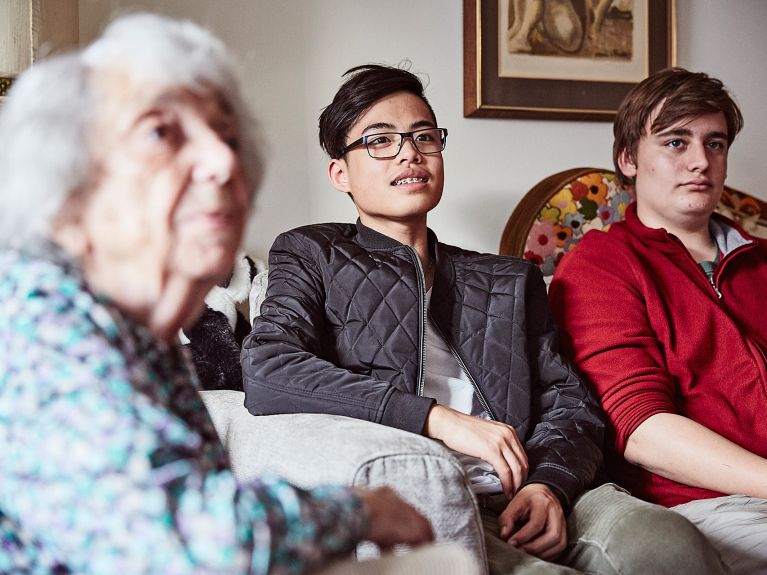Against hate and fear
Over 80 years separate Holocaust survivor Margot Friedlander and two school students from Berlin. What do they have to say to each other?

In 2017 there are very few people left who can talk about the Holocaust from personal experience. Margot Friedlander, who survived persecution, war and the concentration camps as a German Jew, is one of them. The 96-year-old tirelessly reports on her past. She has read from her autobiography and engaged in discussions with young people at countless events and before hundreds of school classes.
In 2014, together with the Schwarzkopf Foundation Young Europe, she established the Margot Friedländer Award. It honours school projects in which young people focus on the Holocaust and the culture of remembrance.
Minh-Thien Nguyen (13) and Felix Röhlke (14) are among the young people who have received the Award. Together with other students of the Carl-Bosch-Oberschule in Berlin they developed a monument called “Moving Sculptures”. The two students would like to campaign to ensure that the horrors of history are not forgotten. Their monument focuses attention on the so-called euthanasia murders of people with physical and mental disabilities. Crimes of this kind were also committed between 1941 and 1945 in a clinic very close to their school.
I want to convey what hate and fear can do to a society.
What significance do remembrance and commemoration have for young people today? This is what Margot Friedlander talks about with her two young guests one afternoon in Berlin. Felix Röhlke explains that after a visit to the concentration camp in Auschwitz he decided to take part in the school project. Another motive: “I have the feeling that more and more people condemn others because of their appearance or their opinions.” He also wanted later to convey to his children “the terrible thing that happened under National Socialism and what hate and fear can do to a society”.
Minh-Thien also views with concern “that people from other backgrounds and older people are increasingly being excluded”. He and Felix agree that memorials are important. Both of them are impressed by their encounter with the survivor Margot Friedlander.
Emigrated – and returned
Their conversation keeps returning to her life story. Friedlander explains how she was discovered in 1944 in spite of her disguise and was then deported to the concentration camp in Theresienstadt – “an intermediate realm – not life, not death”. She also describes how she emigrated to the United States with her husband Adolf in 1946, where they both changed their name from Friedländer to Friedlander
You should become the witnesses to the past that my generation cannot be for much longer.
“New York was not my homeland, but my home,” says Friedlander. It was only in 2010, after she had visited Berlin several times to film a documentary about her life, that she moved back there and has been conducting readings and giving talks ever since. “That is my mission – to speak for the dead, but also to the living of all generations.” And she says to the two students: “Because I do not want you to experience what happened to us. You should become the witnesses to the past that my generation cannot be for much longer.”
Dieses YouTube-Video kann in einem neuen Tab abgespielt werden
YouTube öffnenThird party content
We use YouTube to embed content that may collect data about your activity. Please review the details and accept the service to see this content.
Open consent form
